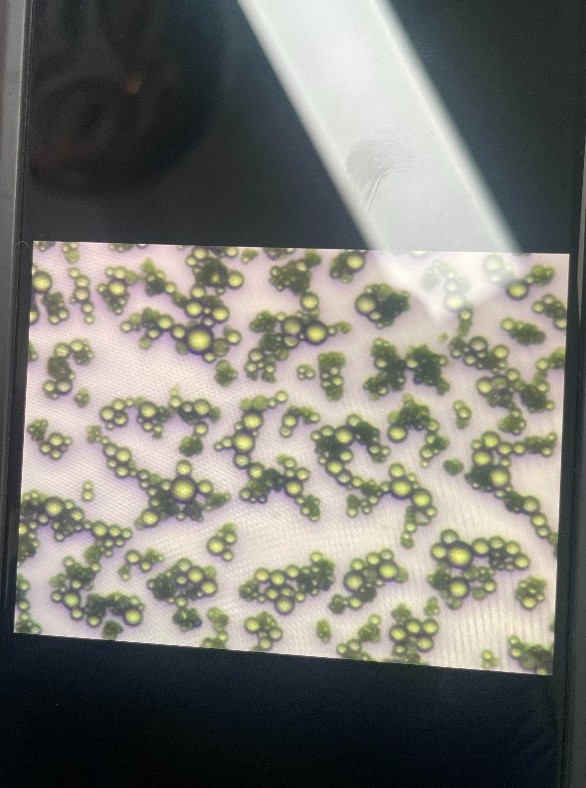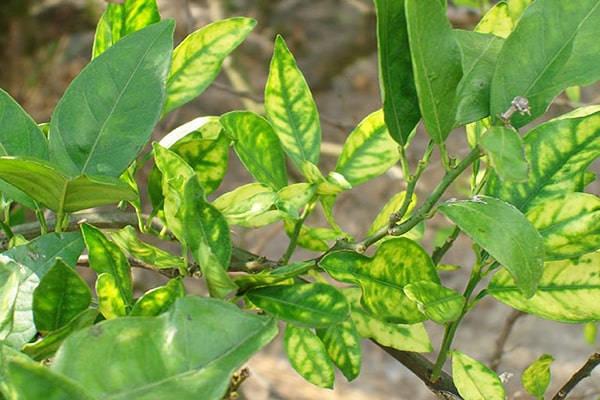
Green vein yellowing disease on grapefruit trees
Greening disease on grapefruit, also known as greening disease or Huanglongbing (HLB), is one of the dangerous diseases and causes serious damage to the citrus industry in general and grapefruit in particular. This disease can reduce the yield and quality of grapefruit, and can even kill the tree if not controlled promptly. In Vietnam, greening disease has become a major concern for grapefruit farmers and other citrus trees such as oranges and tangerines.
In this article, we will learn about the causes, symptoms, effects and prevention measures of greening disease on grapefruit, thereby helping growers have a comprehensive view and effective control methods for this disease.
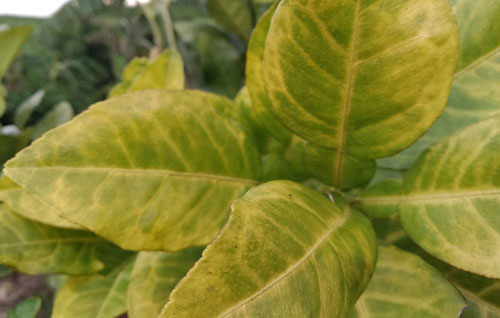
1. Causes of greening disease
Greening disease on grapefruit is caused by the bacteria Candidatus Liberibacter, of which the two main types are Candidatus Liberibacter asiaticus and Candidatus Liberibacter africanus. This bacterium lives in the plant's vascular system, blocking the transport of nutrients and water from the roots to other parts of the plant.
The disease-causing bacteria are spread mainly by the citrus psyllid (Diaphorina citri), a small insect that specializes in sucking sap from plants. When the psyllid bites an infected plant, the bacteria will enter its body and then infect other healthy plants through sucking. The citrus psyllid is the main agent causing the spread of green vein disease over a large area, especially in warm and humid weather conditions.
2. Symptoms of green vein disease
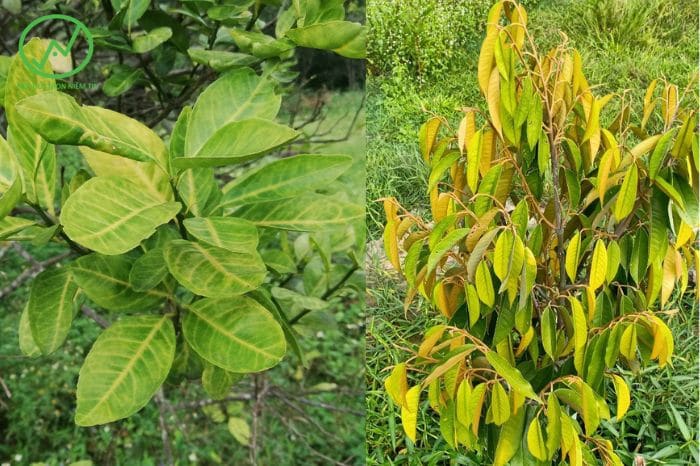
Symptoms of green vein disease are often quite obvious and easy to recognize, although the initial signs can be easily confused with other problems such as malnutrition or pests.
2.1. Symptoms on leaves
- Green vein yellowing: Infected grapefruit leaves often have yellowing from the edges of the leaves, but the veins remain green. Diseased leaves often turn yellow unevenly, with yellow spots mixed with green areas, and prominent veins.
- Small, deformed leaves: Diseased leaves may be smaller than normal, twisted and deformed. Leaves also become thicker and more brittle, and fall off easily in strong winds or when impacted.
- Premature leaf loss: Grapefruit leaves with green vein yellowing disease often fall off early, causing the tree to lose leaves, reducing photosynthesis and gradually weakening the tree.
2.2. Symptoms on fruit
- Small, deformed fruit: Grapefruit on infected trees are often smaller than normal, develop unevenly and have a distorted, deformed shape. Some fruits may be green and not ripe even though it is harvest season.
- Hard, dry fruit pulp: Diseased grapefruit has hard, dry pulp and almost no water. The quality of the fruit is seriously reduced, making it unsalable.
2.3. Symptoms on trees
- Stunted, slow-growing trees: Grapefruit trees with green vein disease grow slowly, the trunk is dry, weak and gradually the tree becomes stunted. If the disease is not controlled, the tree may die after a while.
3. Harmful effects of green vein disease on grapefruit trees
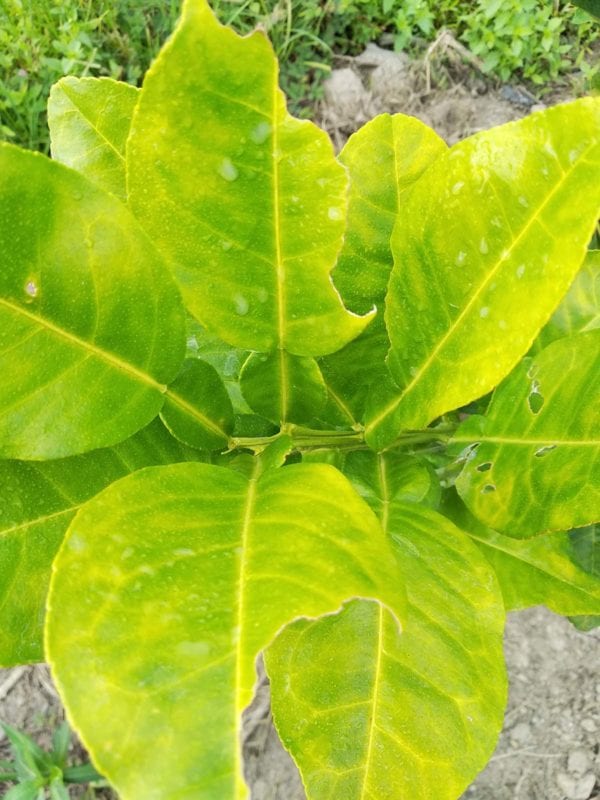
Green vein disease can cause serious consequences for grapefruit trees and grapefruit gardens:
- Reduced productivity and quality: The disease significantly reduces crop productivity due to weakened trees, leaf loss and poor fruit development. Diseased grapefruit does not meet quality requirements, has no water, is dry and hard and cannot be consumed on the market.
- Spreads rapidly: The leafhopper, the disease vector, can move from tree to tree, causing green vein disease to spread widely in the garden if not controlled promptly. This leads to the risk of widespread crop failure.
- Causing death of the tree: A heavily infected grapefruit tree may die after a period of time due to the inability to absorb nutrients and water from the roots to the leaves and fruit.
4. Conditions for the occurrence of the disease
The disease of green vein yellowing occurs and develops strongly in the following conditions:
- Warm and humid weather: This condition is ideal for the development and reproduction of the psyllids, making it easy for them to transmit the disease from one tree to another.
- Weakened crops: Grapefruit trees that are not properly cared for, lack nutrition or are damaged by pests are more susceptible to green vein yellowing.
- High density of psyllids: Gardens with high density of psyllids that are not controlled will be the ideal environment for the disease to arise and spread.
5. Measures to prevent and control green vein yellowing on grapefruit trees
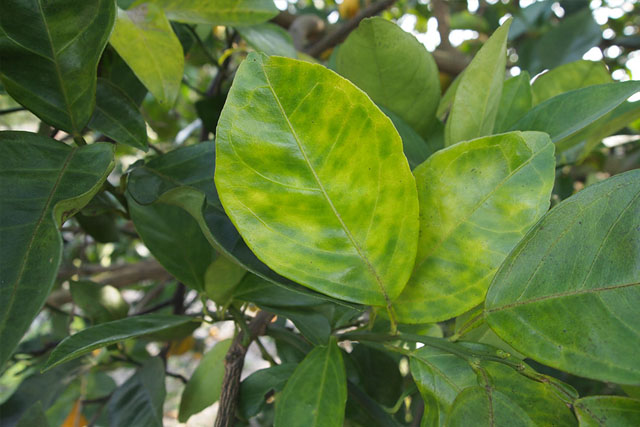
To prevent and control green vein yellowing on grapefruit trees, growers need to apply comprehensive measures, including psyllid management and proper plant care.
5.1. Management of psyllids
- Monitoring psyllid density: Regularly check and monitor psyllid density in grapefruit gardens. If psyllids are detected, immediate treatment measures should be taken.
- Using pesticides: Spraying pesticides periodically to control the number of psyllids and prevent them from transmitting diseases. Pesticides that can be used include Imidacloprid, Buprofezin, or Acetamiprid. Products containing active ingredients for disease control such as: VUA IMIDA, Suparep 300WP, Tosi 30 WG
- Biological measures: Using natural enemies of psyllids, such as parasitic wasps or ladybugs, to control psyllid density naturally and safely for the environment..
5.2. Caring for grapefruit trees
- Fertilize adequately and in balance: Provide all the necessary nutrients such as nitrogen (N), potassium (K), and phosphorus (P) to help plants grow healthily and increase their resistance to disease.
- Pruning: Prune diseased branches and leaves, remove severely diseased plants from the garden to avoid spreading to other plants. Diseased branches and leaves should be destroyed to prevent the spread of bacteria.
- Water properly: Make sure the plants are not flooded or too dry, especially during the dry season or after the rainy season, so that the plants have the best growing conditions.
5.3. Use disease-resistant varieties
- Choose disease-resistant varieties: Use grapefruit varieties that are resistant to green vein yellowing disease or are less affected by this disease. Currently, agricultural research institutes have been developing varieties that are more resistant to green vein yellowing disease.
5.4. Garden sanitation
- Clean the garden: Clean up crop residues, fallen leaves, and spoiled fruit to avoid creating an environment for psyllids and bacteria to grow. After each crop, it is necessary to thoroughly clean the fields to prevent the spread of disease.
6. Conclusion
Pomelo greening disease is one of the most dangerous diseases for citrus trees, especially grapefruit. The disease causes serious damage to the yield and quality of grapefruit, directly threatening the livelihood of growers. However, with proper management and prevention measures, including psyllids control, proper grapefruit care, and clean gardens, growers can minimize damage caused by the disease and effectively protect their crops.
Regularly monitoring the situation of the garden, detecting diseases early, and applying timely treatment measures will help grapefruit growers maintain stable yields, high product quality, and ensure economic efficiency.
Bình luận
Những bình luận mới nhất
